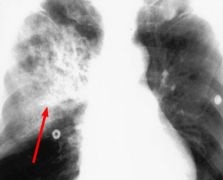PNEUMONIA
It kills more children than any other illness. According to UNICEF and the World Health Organisation (WHO) that includes AIDS, malaria and measles combined - yet pneumonia remains a forgotten disease. A report published by the two organisations aims to provoke action to reduce child mortality from pneumonia.

The UNICEF/WHO report points out that, although effective interventions to reduce pneumonia deaths are available, these reach too few children.
Estimates indicate that over 150 million episodes of pneumonia occur annually among children under five in developing countries – accounting for over 95% of all new cases worldwide. Between 11 million and 20 million children with pneumonia will require hospitalisation - more than two million will die from the disease.
Less than 20% of children with pneumonia received the recommended treatment – antibiotics.
The disease
Pneumonia is a severe form of acute lower respiratory infection that specifically affects the lungs. The most common cause of severe pneumonia in children in the developing world is Streptococcus pneumoniae, the bacteria that causes pneumococcal pneumonia. Haemophilus influenzae type b (Hib) is another leading cause of bacterial pneumonia.
Vulnerability to developing pneumonia
• Undernourished and malnourished children, particularly those not exclusively breastfed or with inadequate zinc intake, are at higher risk
• Children and infants suffering other illnesses, such as AIDS or measles, are more likely to develop pneumonia.
• Environmental factors, e.g. crowded homes, exposure to parental smoking, indoor air pollution, may also increase children’s susceptibility to pneumonia and its severe consequences.
Prevention
Efforts include many well-known child survival interventions - expanding vaccine coverage, promoting adequate nutrition and reducing indoor air pollution.
If given in the first year of life, currently available Hib and pneumococcal vaccines can reduce pneumonia cases, and thus save millions of children from dying of pneumonia. Even better vaccines are in development.
Conclusion
Scaling up treatment coverage is possible - at relatively low cost. ‘The number of lives saved could more than double - to 1.3 million annually - if both prevention via vaccination and treatment interventions to reduce pneumonia deaths were universally delivered’.
16.11.2006





